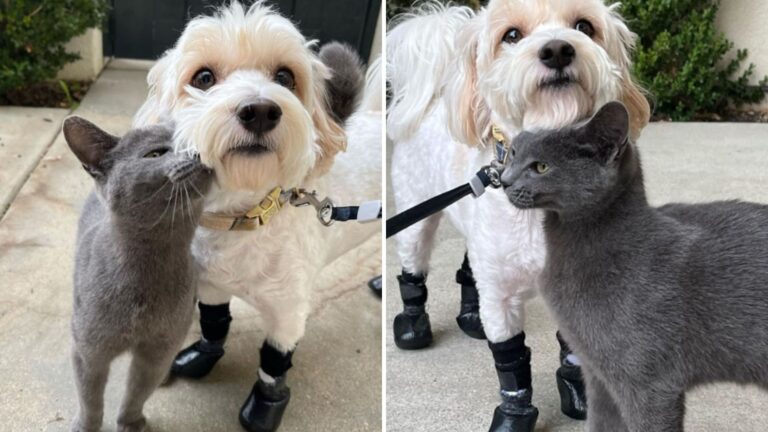14 Key Differences Between Wolves And Huskies That Will Help You Tell Them Apart
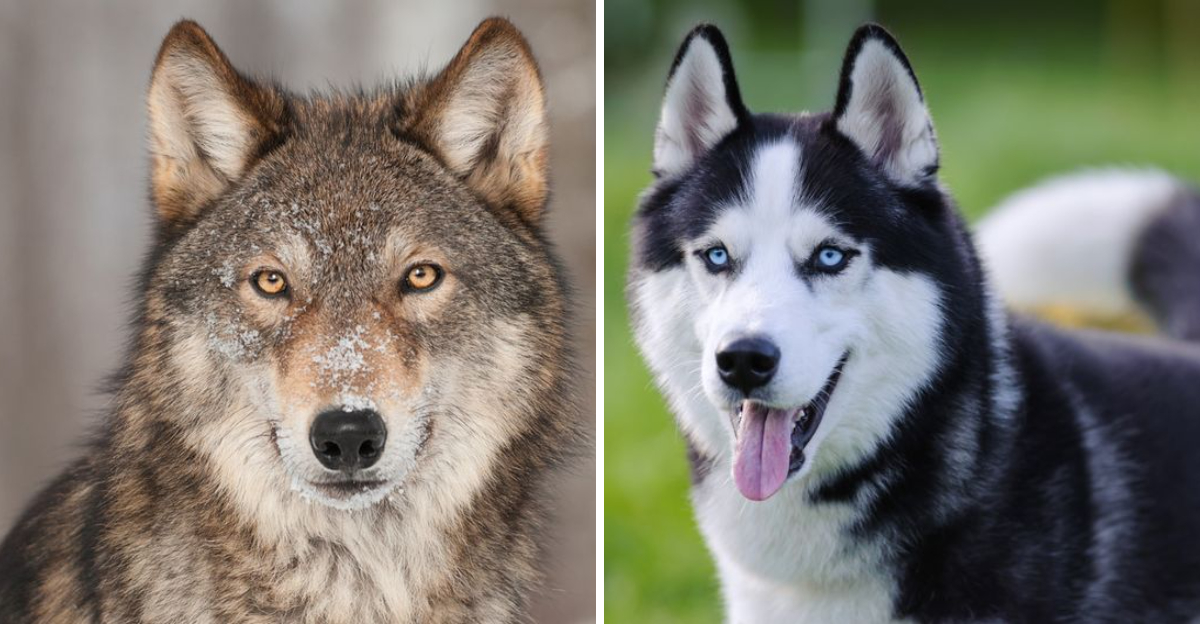
Ever mistaken a husky for a wolf or wondered what makes these two canines different? While they might look similar at first glance, wolves and huskies have distinct characteristics that set them apart.
Understanding these differences isn’t just fascinating – it helps us appreciate both the wild nature of wolves and the domesticated traits of our husky companions.
1. Genetic Background
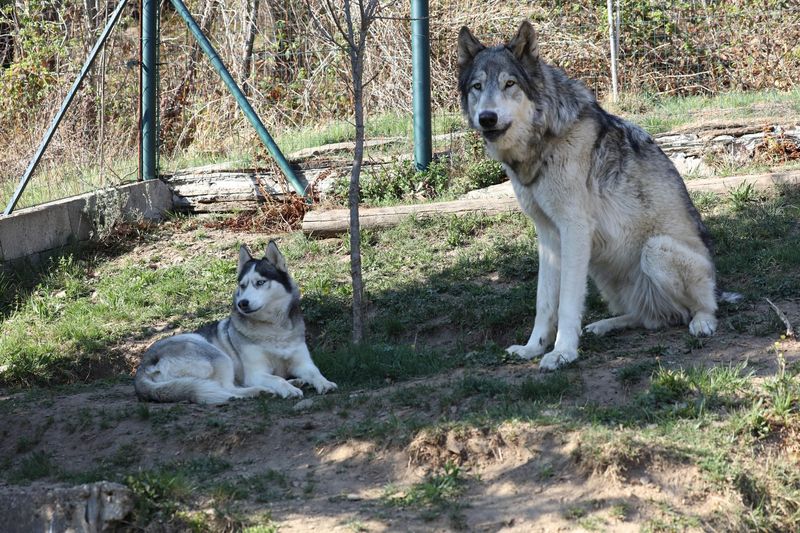
Wolves remain true wild animals, descendants of ancient canids that roamed Earth long before humans. Their DNA has been shaped purely by survival in harsh wilderness conditions.
Huskies, despite their wolf-like appearance, are products of centuries of selective breeding by indigenous Arctic peoples. Their genetics reflect human intervention designed specifically for pulling sleds through snow.
2. Size
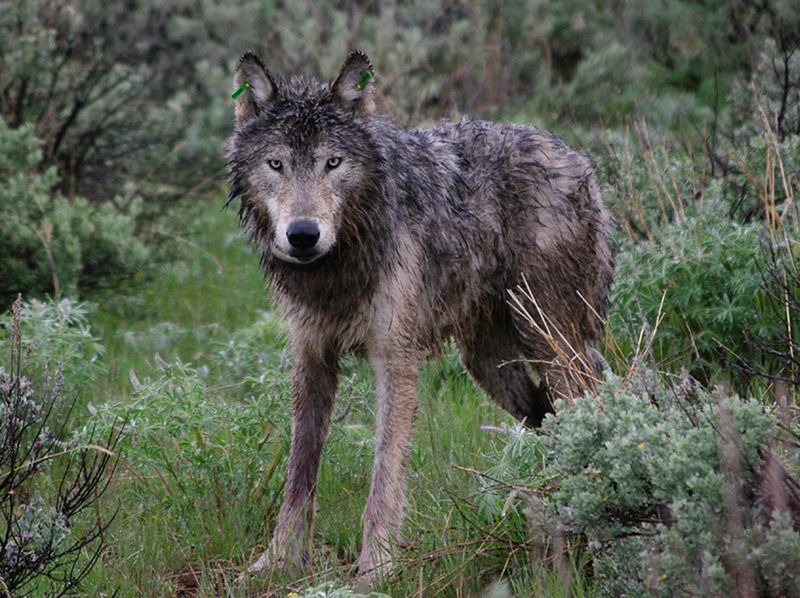
Standing tall and imposing, wolves tower over most domestic dogs at 26-32 inches in height. Their substantial 70-120 pound frames reflect their predatory nature as wilderness hunters.
Huskies possess a more modest stature, typically weighing 35-60 pounds and standing 20-24 inches tall. Their medium build balances strength and endurance perfectly for their traditional working roles.
3. Physical Build
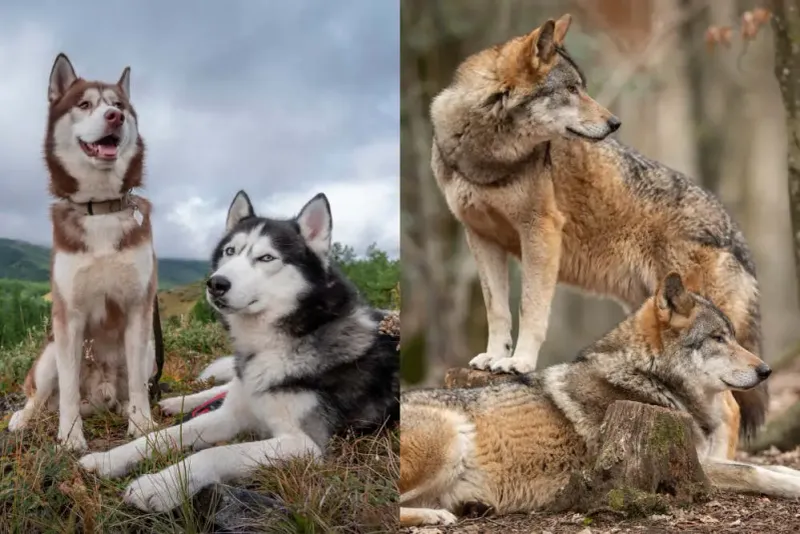
Raw power defines the wolf’s physique – lean, muscular bodies built for covering vast territories and bringing down large prey. Their proportionally longer legs and larger paws serve as adaptations for wilderness hunting.
Huskies display a more compact, efficient build designed for endurance rather than raw power. Their bodies evolved for the specific task of pulling sleds across frozen landscapes.
4. Coat Texture
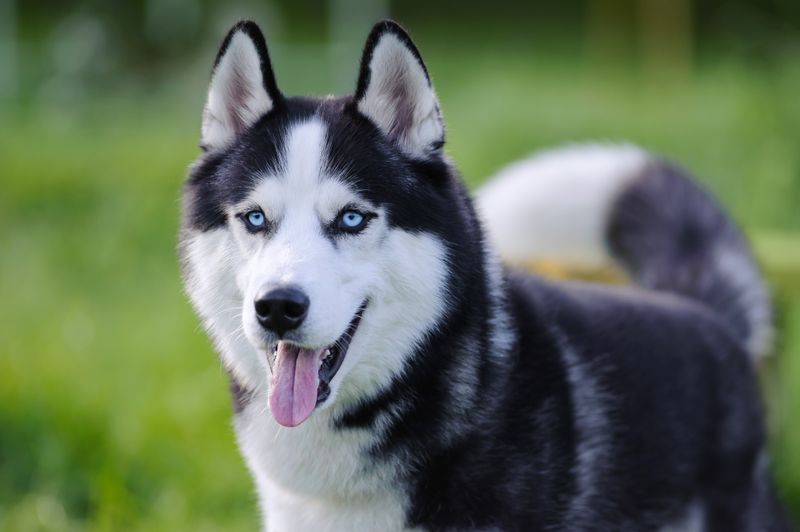
Wolf fur feels coarser to the touch, with a dense undercoat that varies seasonally. Their coloration typically features muted earth tones – grays, browns, and blacks – providing natural camouflage in forest environments.
Stroke a husky’s coat and you’ll notice the extraordinarily plush texture. Their famous double-layer insulation system creates that distinctive fluffy appearance while protecting them in sub-zero temperatures.
5. Tail Shape
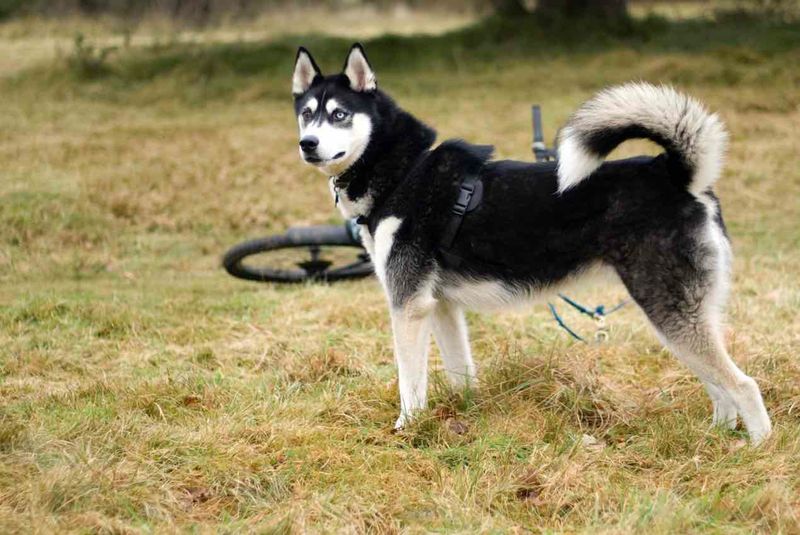
Watch a wolf’s tail in motion and you’ll notice it hangs straight down or horizontally when relaxed. This natural position serves practical purposes for balance during hunting and running.
A husky’s signature curled tail creates an unmistakable silhouette. This distinctive feature arches proudly over their back, especially when they’re alert or excited – a telltale sign of their domesticated heritage.
6. Facial Features
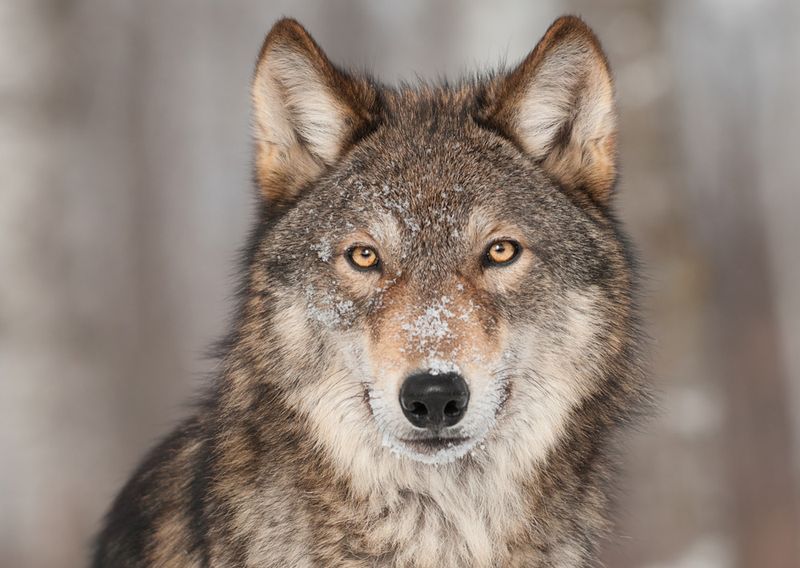
Wolves possess intense, penetrating gazes framed by angular facial structures. Their broader skulls and pronounced cheekbones create a distinctive predatory appearance that can seem intimidating even in repose.
Husky faces reveal their domesticated nature through softer, more rounded features. Their expressive eyes seem to communicate directly with humans – a reflection of thousands of years living alongside people.
7. Eye Color
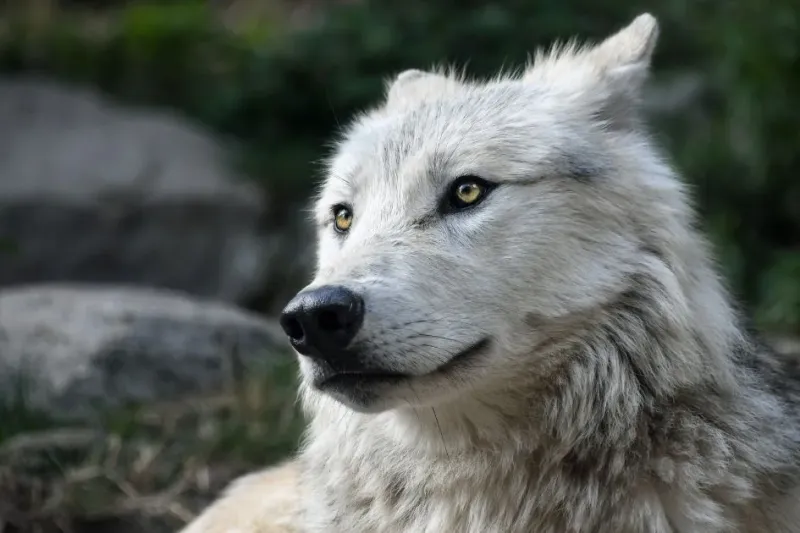
Peer into a wolf’s eyes and you’ll meet an intense amber or yellow gaze. This coloration enhances their night vision capabilities – crucial for hunting during dawn and dusk hours.
Huskies captivate us with their striking eye colors. From piercing ice-blue to multi-colored heterochromia (different colored eyes), their distinctive gaze reflects centuries of selective breeding rather than wilderness adaptation.
8. Behavioral Differences
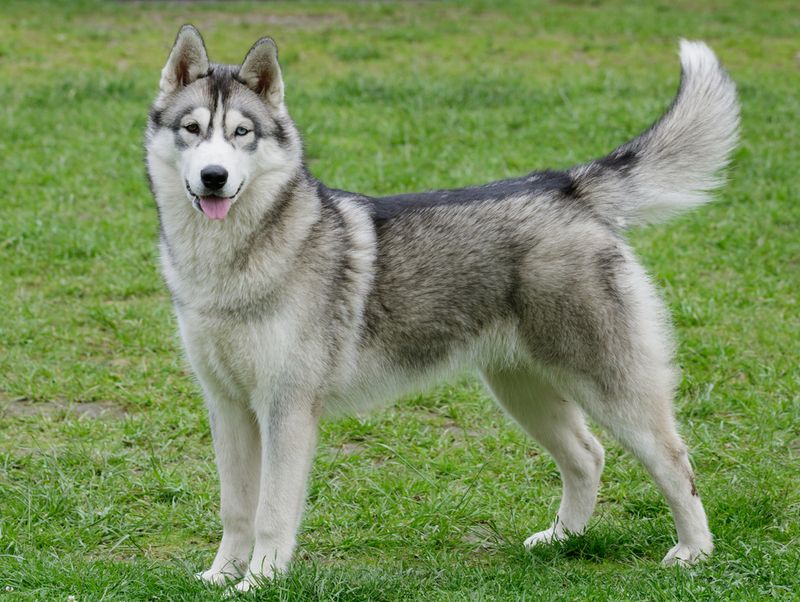
Wolves maintain a natural wariness that keeps them alive in the wild. Even hand-raised wolves retain strong instincts that make them unpredictable around humans – they’re wild animals at heart.
Centuries of domestication have wired huskies to seek human companionship. While maintaining some independent traits, they’ve evolved to understand human social cues and form family bonds that wolves simply cannot replicate.
9. Diet
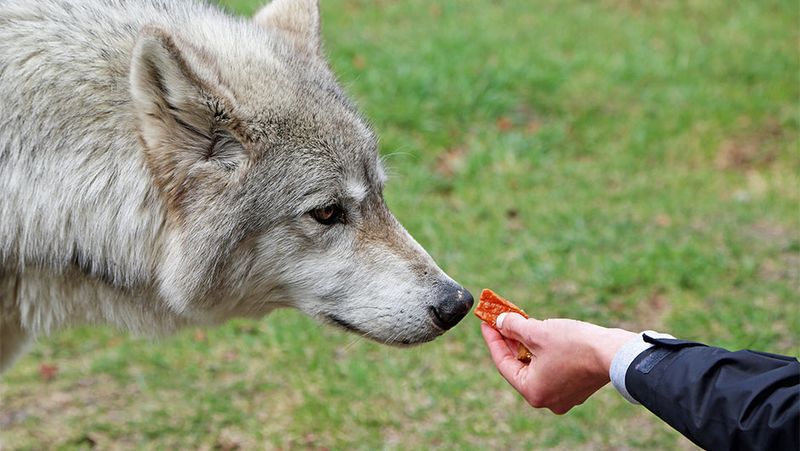
True carnivores, wolves coordinate complex hunting strategies to bring down prey many times their size. Their digestive systems process raw meat, bones, and organs – the spoils of successful pack hunts.
Huskies thrive on balanced commercial dog foods or carefully prepared homemade diets. While meat remains their primary nutrition source, they’ve adapted to digest a wider variety of foods than their wild counterparts.
10. Communication
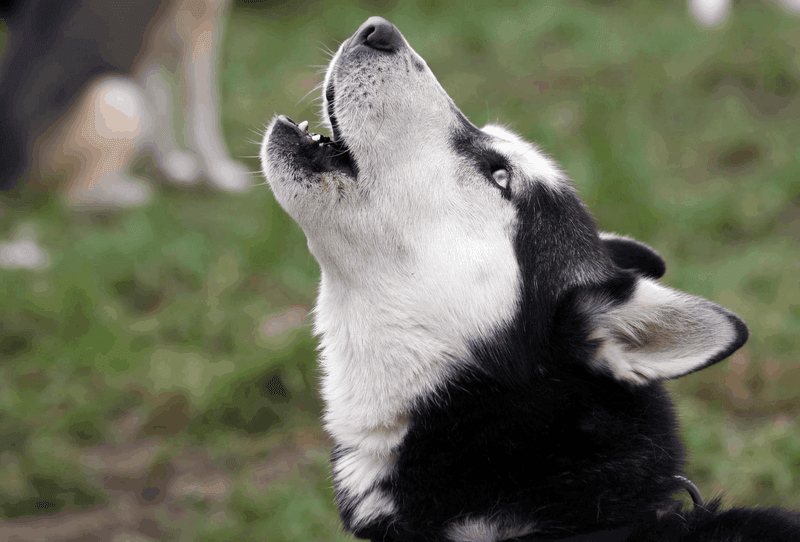
That iconic wolf howl serves as long-distance communication across vast territories. Their complex vocalizations and subtle body language form a sophisticated system for coordinating pack activities.
Huskies famously “talk” to their human families through an entertaining range of howls, whines and mumbles. Their vocal nature reflects both their wolf ancestry and centuries of working closely with humans in harsh Arctic conditions.
11. Social Structure
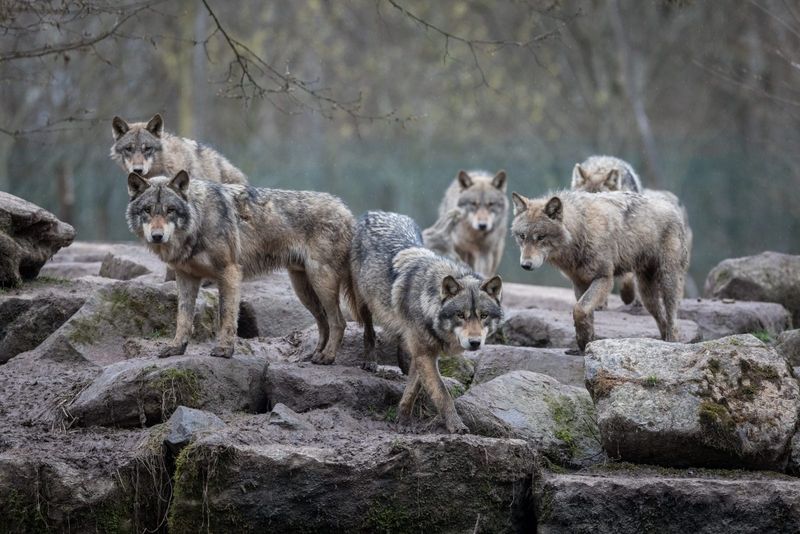
Wolf packs operate as highly organized family units with strict hierarchies. Each member knows their role, from alpha leaders to subordinates, creating a finely-tuned survival machine in harsh wilderness.
Huskies recognize human family members as their pack. While they retain some hierarchical instincts, they’ve evolved to integrate into human households rather than form the rigid dominance structures of their wild ancestors.
12. Energy Levels
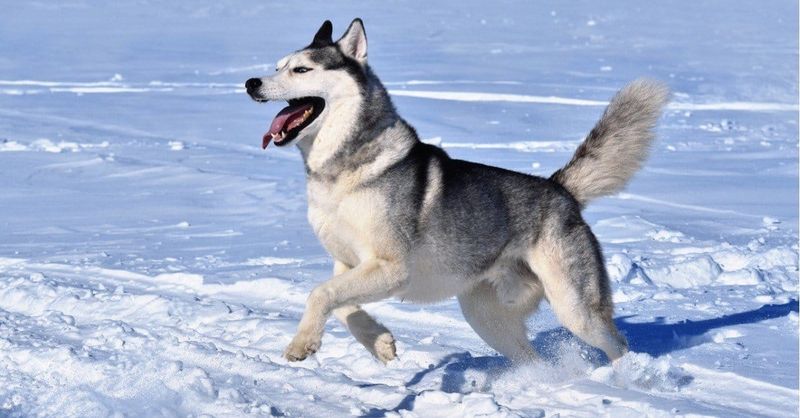
Wolves live in a constant state of energy conservation, alternating between intense hunting bursts and rest periods. Their survival depends on this careful balance in environments where food isn’t guaranteed.
Huskies bring their working heritage into modern homes with boundless enthusiasm. Their famous energy requires consistent outlets – without proper exercise, that sled-pulling stamina quickly transforms into destructive household behavior!
13. Lifespan
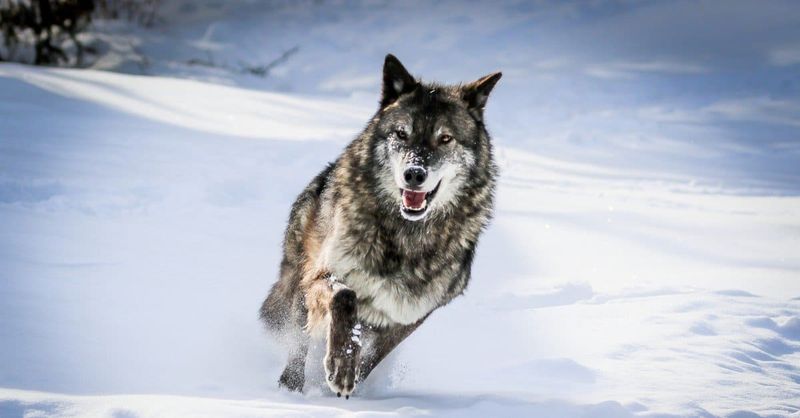
The harsh realities of wilderness life limit wolves to relatively short lifespans – typically 6-8 years in the wild. Injury, starvation, territorial conflicts, and harsh weather create constant survival challenges.
Protected from nature’s dangers, huskies enjoy considerably longer lives of 12-15 years. Regular veterinary care, consistent nutrition, and shelter from extreme elements extend their time with human families.
14. Training
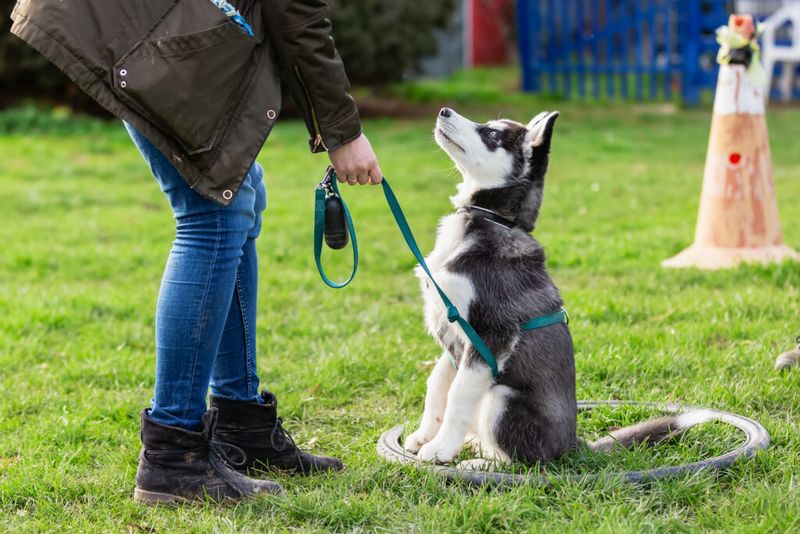
Wolves follow only what benefits their survival. Their intelligence serves wild instincts rather than human commands – even hand-raised wolves retain independent decision-making that resists traditional training.
Huskies blend intelligence with stubborn independence in ways that challenge even experienced dog owners. Their working heritage requires consistent, reward-based training that respects their problem-solving abilities rather than demanding blind obedience.

